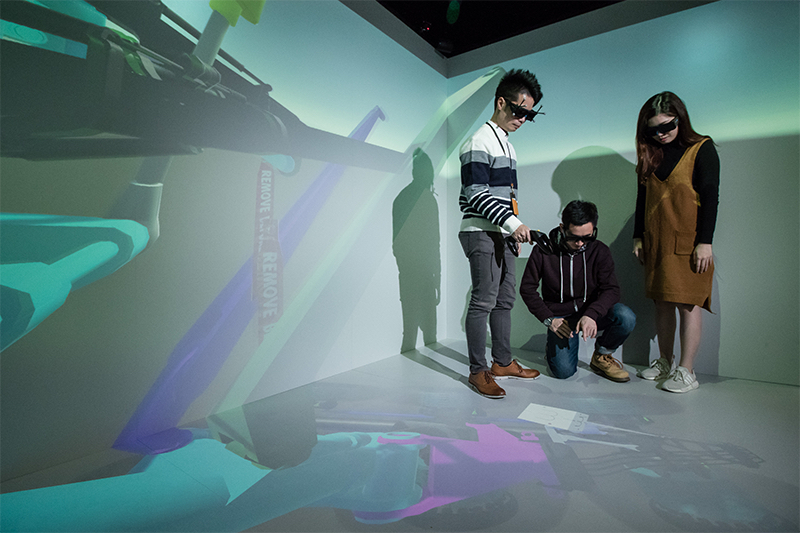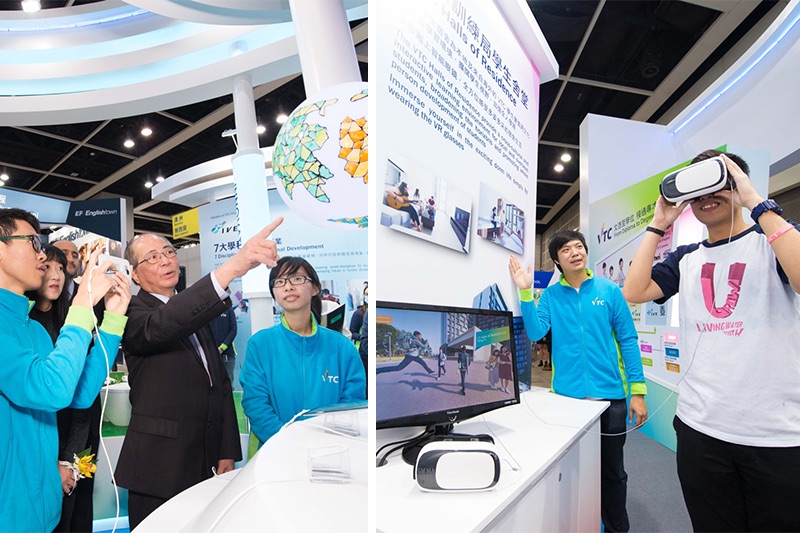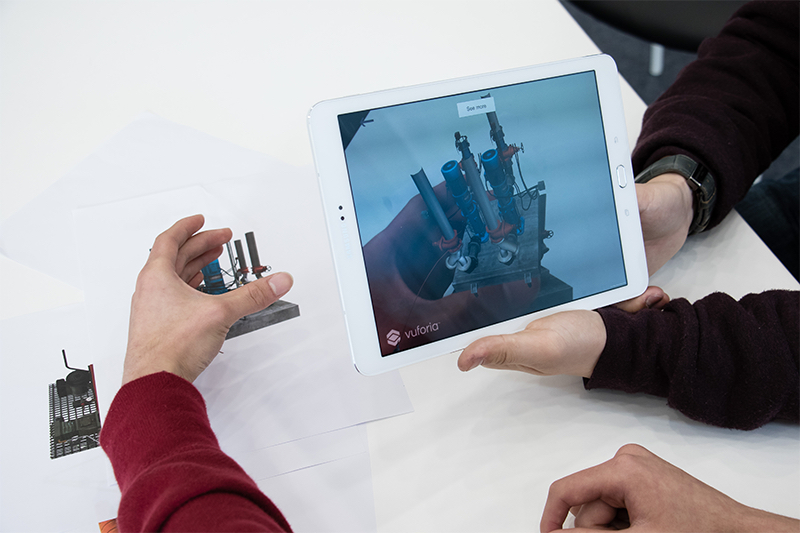Meet the team bringing virtual and augmented reality technology into Hong Kong’s classrooms, creating a new reality for learning in Hong Kong.
Virtual reality (VR) and augmented reality (AR) technology have now leapt from the pages of science fiction into our lives: their applications are used in everything from theme park rides and video games to training NASA astronauts. Bringing this technology even closer is the team at Hong Kong’s leading provider of vocational and professional education and training (VPET). At their Vocational Training Council (VTC), they have set up three STEM Education Centres (science, technology, engineering, and mathematics) in the Tsing Yi and Chai Wan campuses of the Hong Kong Institute of Vocational Education (IVE) and Youth College (Kowloon Bay) – and are all using Virtual Reality in the classroom. We sat down with Dr Johnny Kwong, Senior Project Officer, and his colleagues Joseph Siu and Eva Mak to talk about why they see Virtual Reality as the future of teaching.

“VTC uses technology-enhanced learning,” begins Joseph Siu as he puts on a headset and picks up two controllers. The VR situation he is enacting, fixing a leaking hydraulics pump in a hospital plant room, was designed to familiarise students with the entire process, complete with unscrewing the nuts and bolts and hanging up a warning sign so others don’t activate the broken system by accident. The actions students perform in this VR exercise also simulate the actual movements required to fix the problem: one needs to turn the wheel that controls the water valve, twist the screws to get them in and out and shake the dirt off a water filter. Though the force needed to actually complete the task cannot be replicated in Virtual Reality, Joseph says, almost everything else is.

Another VR system at use in the STEM Education Centre is the Cave Automatic Virtual Environment System. Wearing 3D glasses, students look at large-scale renderings of different machinery. A similar class is taught using AR, which is a technology where “you still see real-world objects, but you are also bringing virtual objects into the real world,” says Joseph, citing the worldwide gaming sensation Pokemon Go as a prominent application of the technology. In VTC, the technology is used for teaching mechanical engineering, aircraft maintenance, maths and chemistry. How? By pointing a tablet computer at a deceptively simple image of, say, an aeroplane engine, the previously flat diagram springs to life; teachers can rotate the angle, looking at it from all sides so students can truly understand the relative positions of the components, giving a vastly different perspective from traditional textbooks.

These technologies don’t come cheap. Creating just one scenario, like the hydraulic pump exercise that Joseph demonstrated, takes six months to complete, and a development team that goes on site to measure the correct dimensions of the machinery before building the program and then testing it for two months. As Joseph explains, though dimensions in videos games don’t need to be accurate, “for education and teaching purposes, all our components are in real size.” However, as far as his teams see it, it’s important work. According to government statistics, the percentage of senior secondary students taking science-related subjects has been dropping. Whilst maths is mandatory in secondary schools, physics and chemistry are not, and there’s a now an increasing shortage of STEM talent in Hong Kong.
To combat this trend, the STEM Education Centre that houses the VR/AR Learning Zone works from two angles: it not only caters to students already enrolled in VTC, it also does outreach events aimed at secondary school students, regardless of their major. “We encourage students to engage in cross-disciplinary learning, and STEM education is a perfect platform for that,” says Eva. They host workshops and summer camps with activities like programming robots and printing 3D models. They also offer Train-the-Trainer Workshops for secondary school teachers – free of charge. The team are convinced that with the incorporation of virtual reality (VR) and augmented reality (AR) into the curriculum, they can create more interactive and stimulating classes, inspiring a new generation to explore and innovate. At VTC, they’re forging the future in more ways than one.
Related Articles
Virtual Reality To Fight Your Biggest Phobias
Sandbox VR: How a Millennial Founder Engineered a USD 79M Gaming Sensation




